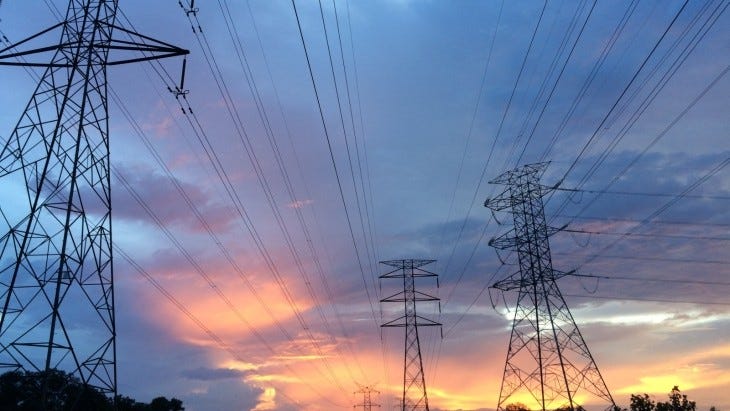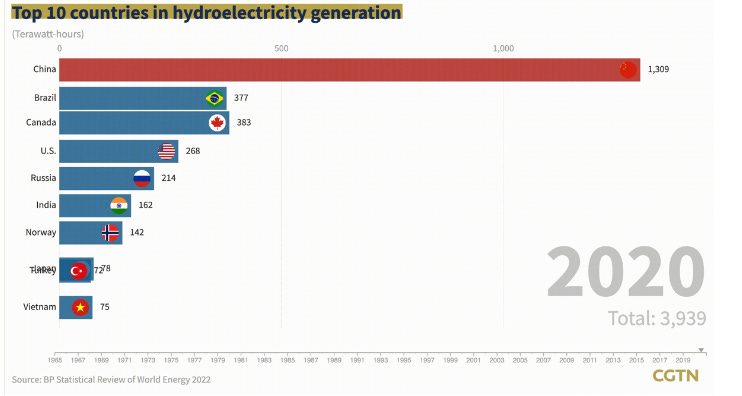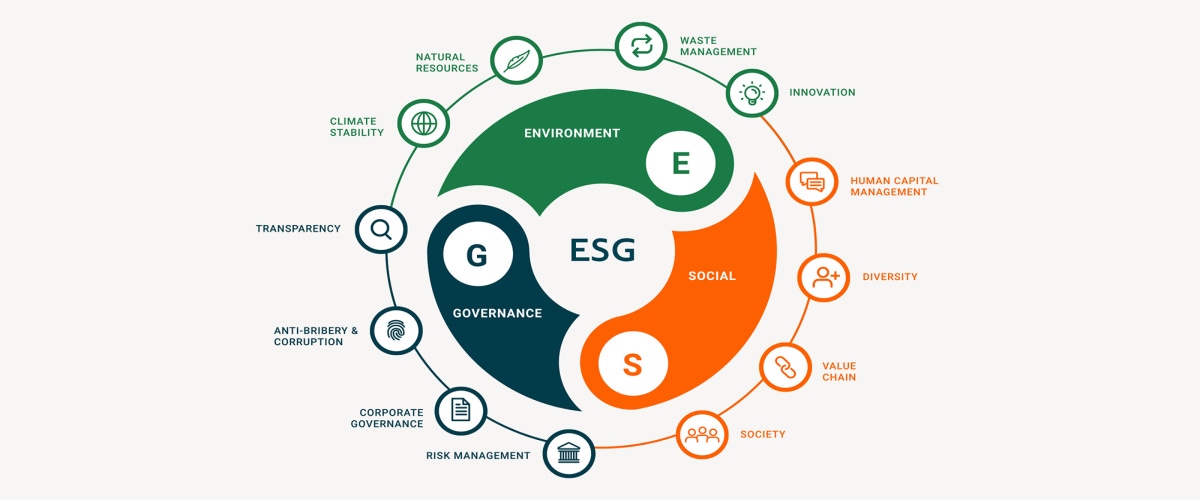UPDATE: Is the Mekong a river of contention or is the presence of non-regional powers both generating a narrative of contention and inciting instability in the region through diplomatic and socialisation programs? The Mekong River Commission says it has made a “breakthrough” on hydropower, Laos is fast becoming the battery of Asia and how China became the world’s leading Hydro Power. Also today, the Long Mekong looks at Environment, Social and Governance (ESG), which is seemingly everywhere, but not in Southeast Asia where ASEAN has no ESG standards and relies on US, EU and UK service providers. Three articles in today’s Long Mekong Daily help clear the air by clarifying what ESG really is, pour water on investment misconceptions and go granular on Cyber. The Japanese controlled ADB continues to support the second phase of the Cambodiangovernment’s decentralisation and deconcentration reforms and, last but not least, Netflix launches an “Asian” channel that looks Asian but sounds American.
Is The Mekong Becoming Like the South China Sea
In recent years, the fate of Southeast Asia’s great river – the Mekong – has attracted growing international scrutiny. The Mekong faces many challenges, from the impacts of climate change and saline encroachment in its delta, to dam developments on the headwaters of the river inside China. All of these concerns have been magnified by the intensifying strategic competition between the United States and China, which has imbued the question of the Mekong’s future with a strategic undercurrent. Ming Li Yong (@drmingliyong), a fellow at the East-West Center who has researched transboundary water governance and hydropower development in the Mekong River Basin, spoke to The Diplomat about comparisons between the Mekong and the South China Sea, the impacts and implications of China’s upstream hydropower development, and the future of transboundary governance of the river and its resources. The Diplomat
Mekong River Commission Makes a “Breakthrough”?
The Mekong River Commission (MRC) announced Tuesday the approval of a “milestone” document revising preliminary design guidance for hydropower projects and separate new guidelines on cross-border environmental impact assessments. “This is a historic breakthrough for MRC cooperation after years of discussion,” said Dr Anoulak Kittikhoun, Chief Executive at the MRC Secretariat in Vientiane. “The two guidelines point out exactly what to do in minimising cross-border environmental impacts,” Dr Anoulak said. “Members will see how beneficial the guidance is, not just to their own country and local communities, but in working together with their neighbours. The revised design guidance seeks to minimize impacts on ecosystems and communities while the environmental guidelines aim to measure how a project in one country affects a neighbouring country. Dr Anoulak said the updated guidance was “gearing us toward projects that are both economically viable and environmentally friendly (and) more protective of the river’s resources, while safeguarding of people’s livelihoods.” A statement said the revised design guidance would measure how “any large water infrastructure” affects issues that may adversely impact river ecosystems and vulnerable communities at a cross-border or regional level — like water flow, sediment transport, water quality and fisheries. Talks on revising the design guidance for hydropower projects follow the emergence of gaps in initial guidelines approved in 2009. These covered six areas — sediment transport and geomorphology, water quality, aquatic life, fish and fisheries, dam safety, and navigation. Khmer Times MRCMekong
Laos is Electric
Amidst the development the Laos-Thailand-Malaysia-Singapore Power Integration Project, Laos will further establish itself as the key supplier of electricity in Southeast Asia. Laos is being integrated into the power grids ofmore markets including Cambodia, China, Myanmar, Thailand, and Vietnam. With the Laos-Thailand-Malaysia-Singapore Power Integration Project, Laos will pave the way for it to be a key regional supplier of electricity. “This will utilise its abundance of hydropower to provide stable baseload power, ensuring power supply flexibility for neighbours through an integrated grid,” Fitch noted. Join Asian Power community Your e-mail address “The LTMS-PIP will extend electricity export capabilities to markets which are not adjacent to Laos, such as Malaysia and Singapore.” Read more: Regional grid connection can boost energy transition, economic growth The project will also allow Singapore to draw electricity from up to 100-megawatt of hydropower capacity within Laos’ borders. “We expect cross-border electricity trade agreements to bring clarity to the technical and regulatory challenges that markets face, such as the areas where grid infrastructures need upgrading, and which markets should provide the funding for that.” Asian Power
How China Became the World’s Leading Hydro power
China aims to have a carbon emissions peak by 2030 and achieve carbon neutrality in 2060. How would that happen? Key steps toward these goals include expanding the use of clean energy sources. China has committed itself to raising its non-fossil fuel share of energy consumption – solar, wind, hydropower, bioenergy and others – to 20 percent by 2025 and 25 percent by 2030. Apart from increasing the use of wind and solar power, building more nuclear plants and further developing natural gas resources, hydropower has remained China's stable source of energy. With the most abundant hydropower resources in the world, China is leading the world in terms of power generation output, cumulative installed capacity and newly added capacity. China has led the world in hydropower production since 2004. Clean, efficient, safe, stable and relatively low in price, hydropower is considered the first and most mature renewable energy source to achieve large-scale commercial development worldwide. And the degree of hydropower development in major industrialized countries is generally higher.Currently, hydropower is China's second-largest energy source after coal, and has accounted for roughly 17 percent of China's electricity generation in the past decade. China plans to raise the share of non-fossil fuels in its electricity supply to 39 percent by 2025, up from around 31 percent now. CGTN
What is ESG Investing
Environmental:
How a company mitigates its GHG emissions
How sustainable its products are
How it deals with recycling and waste management
How it sources its products (e.g., does it use fair trade suppliers)
Social:
Does a company participate in community development
Does it consider diversity and equal employment opportunity in its hiring process
Does it prioritize human rights anywhere it does business
Does it support its employees’ training and development
Governance:
Is executive pay at a company reasonable
How diverse is the board of directors
How responsive is the board to shareholders
Is there financial and accounting transparency
ESG Standards For Southeast Asia
Indonesia-based AC Ventures (ACV) has released its Scaling Impact With Technology report, setting up the first set of quantifiable ESG standards in the archipelago’s tech landscape. The report, which was done in partnership with the Boston Consulting Group, applies an impact analysis to ACV and its portfolio companies. The net impact ratio metric juxtaposes the degree of positive and negative resources used by a firm, which is akin to a profitability metric for ESG. ACV recorded a positive 37% impact ratio, which is a higher-than-average figure in contrast to Nasdaq Small Cap Index’s positive 29%. There are currently no standardized measures for quantifying ESG in Southeast Asia, which is why ACV based the analysis on a standard created by Finland-based The Upright Project. The startup split the private economy into 250,000 types of goods and services and used machine learning to understand the impact of each product. The new metric enables institutional investors to make better ESG decisions and optimize their net impact ratio. “This means that capital will start to flow into companies that are solving important problems, rather than the companies that are causing them,” The Upright Project COO Toni Laitila said in a press roundtable. ACV created the publication to inspire other companies and set a baseline for how ESG should be reported. “This will be as important as financial metrics in evaluating the performance of new companies and our portfolio companies,” Adrian Li, founder and managing partner at ACV, said in a statement. ESG assets are poised to grow to US$41 trillion this year and jump to US$50 trillion by 2025, Bloomberg Intelligence reported. Tech in Asia, 6 October 2022
Why ESG Matters
Most international and domestic public (and many private) companies are being evaluated and rated on their environmental, social and governance (ESG) performance by various third party providers of reports and ratings. Institutional investors, asset managers, financial institutions and other stakeholders are increasingly relying on these reports and ratings to assess and measure company ESG performance over time and as compared to peers. This assessment and measurement often forms the basis of informal and shareholder proposal-related investor engagement with companies on ESG matters. Report and ratings methodology, scope and coverage, however, vary greatly among providers. Many providers encourage input and engagement with their subject companies to improve or sometimes correct data. Harvard Law, ESG Reports and Ratings: What They Are, Why They Matter
ESG and Cybersecurity
In late spring 2022, the Securities and Exchange Commission (SEC) charged an elite investment adviser for “misstatements and omissions” about Environmental, Social, and Governance (ESG) considerations related to its managed mutual funds. This same financial firm has also faced myriad cybersecurity problems over the past fifteen years, including a data breach and deficient cybersecurity practices. It’s not a unique scenario: companies large and small, public and private, are facing increased challenges in managing the requirements and responsibilities of ESG and cybersecurity. Both fields, besides maintaining a stronghold on news headlines and cutting-edge tech entrepreneurs, demand not just constant attention, but also transparency. As various federal agencies have demonstrated, audits and investigations will determine when quality reviews and compliance certifications are not accurate. Every level, from the C-Suite to the new entry hire, must be trained on ESG and cybersecurity as relevant to their work roles. Furthermore, corporate culture should strive to maintain awareness of the significance of ESG and cybersecurity: two buzzy sectors that cut across all work departments. Wharton Knowledge, ESG and Cybersecurity Compliance Are Every Employee’s Concern
ADB Continues to Fund Cambodian Reforms
Minister of Interior Sar Kheng has requested that the newly appointed Asian Development Bank (ADB) country director for Cambodia continues to support the second phase of the government’s decentralisation and deconcentration reforms. The government has currently transferred 55 jobs in 20 sectors to municipal, town and district administrations. Sar Kheng met Jyotsana Varma at the National Assembly on October 4. “We hope that ADB will continue to support decentralisation and deconcentration reforms, as well as the second phase of the government’s national programme. “The government has been successful, with these reforms having contributed to stability, poverty reduction and the participation of women in sub-national administrations,” Sar Kheng said.In the meeting, Varma said ADB was a strong partner of the Cambodian government, particularly the interior ministry, with a number of projects being implemented together. “ADB would like to thank [Sar Kheng] for supporting ADB during the fight against Covid-19, which yielded commendable results,” Varma said. She congratulated the government for its commitment and willingness to implement decentralisation and deconcentration reforms, which she said required time. Sar Kheng noted that ADB has, along with a number of other development projects with countries along the Mekong River, supported Cambodia in its decentralisation and deconcentration reforms since 2002. Phnom Penh Post
Netflix Launches Asian Channel
Golden, is Netflix’s new social media channel dedicated to celebrating the pan-Asian diaspora. People around the world will be able to find and follow our new @NetflixGolden channels on Instagram and Twitter, which will celebrate Netflix’s pan-Asian talent both in front of and behind the camera. Fans can also expect new episodes from the social series “Spill the Boba Tea,” a collaboration with Wong Fu Productions, where co-founder Philip Wang will chat with your favorite Netflix stars at his BOPOMOFO cafe while crafting unique boba tea drinks based on the stars’ lives. Our new episode, featuring Emily in Paris star Ashley Park, debuts Jan. 27 on our @NetflixGolden Instagram channel. Golden joins Netflix’s other audience-focused and genre channels including Strong Black Lead, Netflix Film, Con Todo, Geeked, Netflix Is a Joke and Most. Our name, Golden, was inspired by the phrase "Real gold will always shine" and that all Asian stories are golden, and if given the opportunity, they will shine. As a first-generation Chinese-American growing up in the Midwest, I rarely saw individuals who looked like me in American media, but also felt disconnected from the stars I saw in the Chinese soap dramas my mom binged. For me, being a part of the diaspora means existing in between cultures — and often feeling like you don’t belong fully in either. With Golden, we want to give the Asian diaspora community a way to feel more connected to each other’s cultures and their own by celebrating Asian talent, storytelling and artistry on Netflix. Golden Netflix








